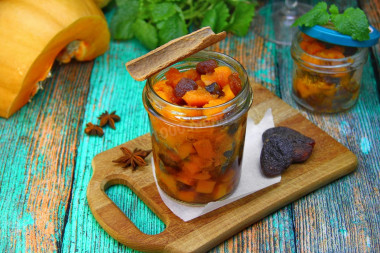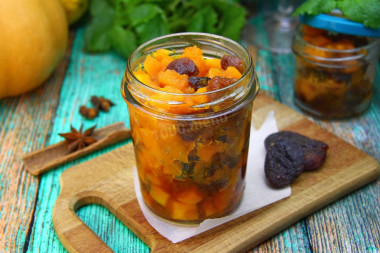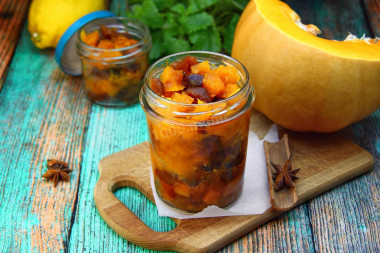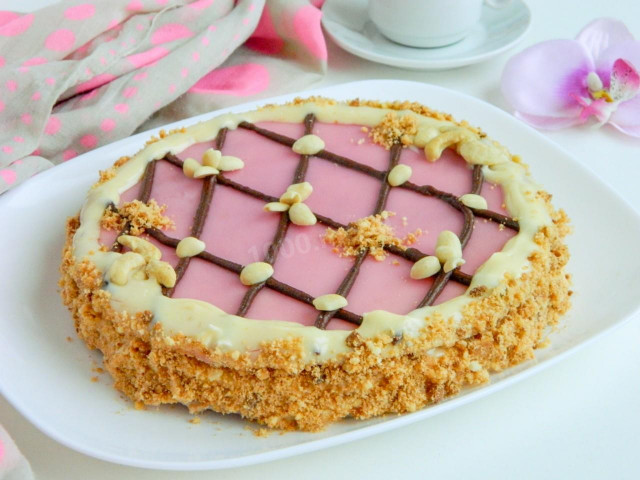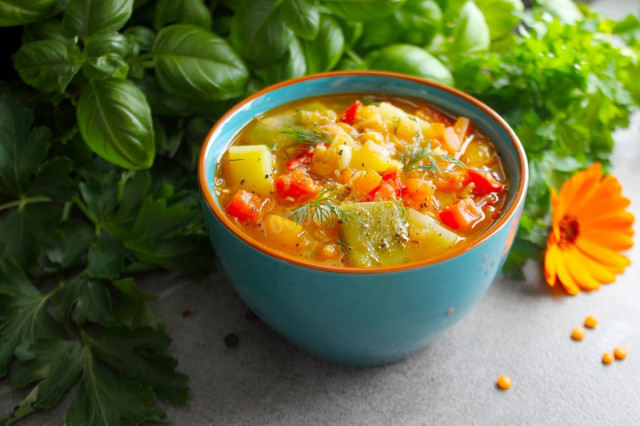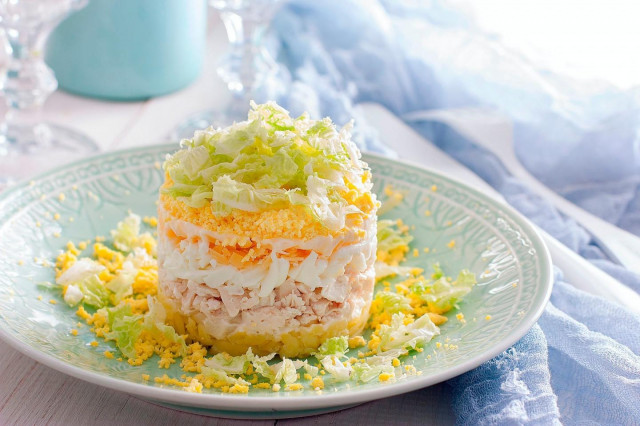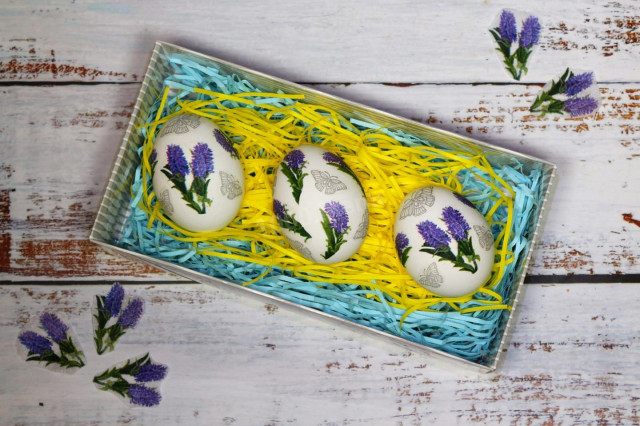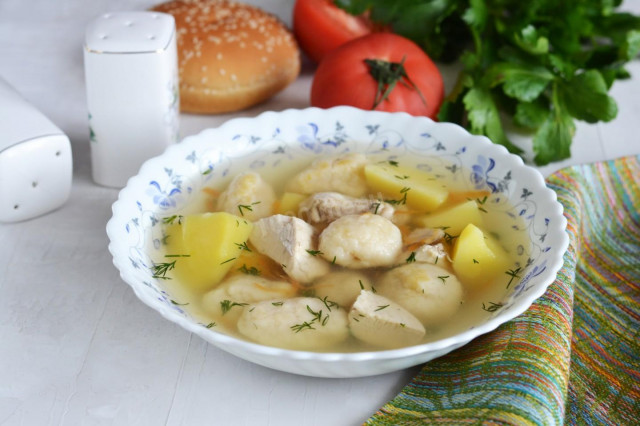Composition / ingredients
Step-by-step cooking
Step 1:
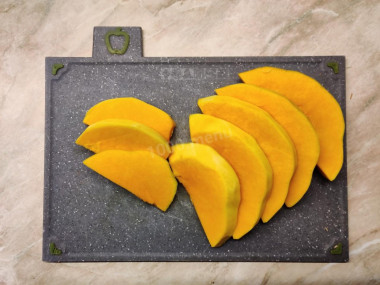
Wash the pumpkin and use a peeler or a sharp knife to cut off the tough peel. Cut the pumpkin into slices about a centimeter high. I have Butternut squash. Try not to cut off too much pulp along with the peel. The vegetable peeler will provide a minimum of waste.
Step 2:
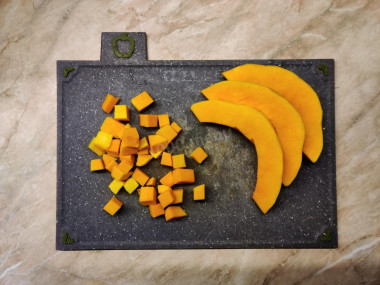
Chop the pumpkin into a cube with a face of about a centimeter. This is the traditional way of slicing pumpkin for any jam.
Step 3:
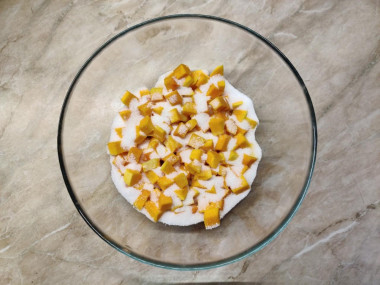
Fill the pumpkin with sugar, mix and tighten the bowl with cling film so that nothing superfluous gets into the future jam. Leave the pumpkin for an hour at room temperature in order for it to give juice.
Step 4:
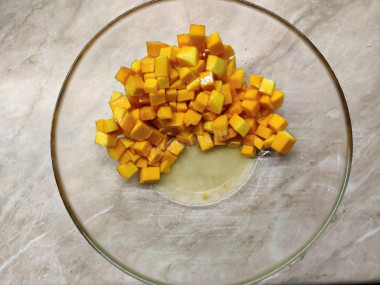
That's how much juice has been released from the pumpkin after an hour.
Step 5:
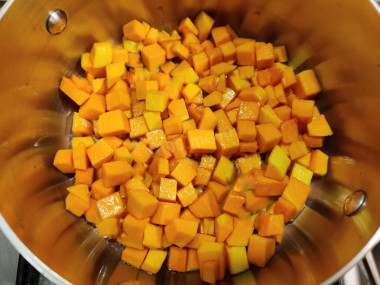
Put the pumpkin together with the juice in a suitable saucepan and cook on the slowest fire for twenty minutes. Stirring occasionally so that the pumpkin does not burn. Pumpkin should be cooked, not fried. Therefore, if there is not enough juice, gently add a little boiling water. Just a little bit, no more than 100 ml for the specified amount of pumpkin. And take care of your hands!
Step 6:
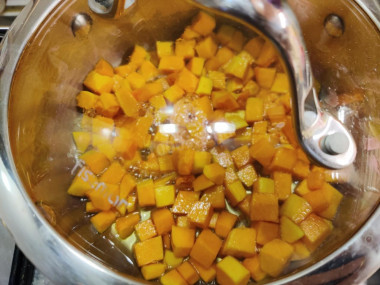
Of course, everyone's plates are different, so someone, like me, will need to cover the pan with a lid to reduce moisture loss.
Step 7:
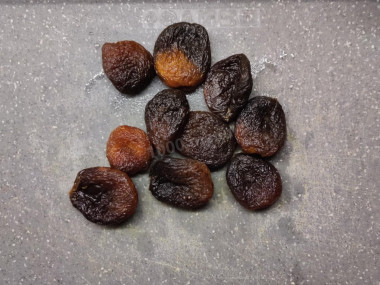
Here is such a dark dried apricot, in fact - the most natural. This is what apricots would look like if you decided to dry them yourself in the sun. My dried apricots do not contain sunflower oil, so I just washed it under running water. If you have a beautiful orange dried apricot, then you definitely need to pour boiling water over it to wash off the vegetable oil from its surface.
Step 8:
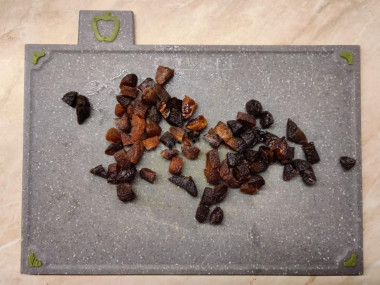
Slice the dried apricots roughly the same as the pumpkin slices. So the workpiece will look more harmonious.
Step 9:
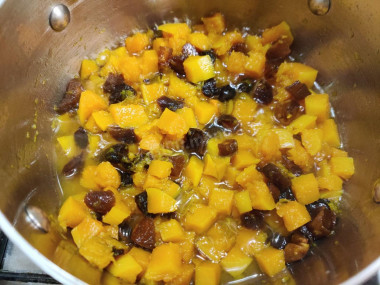
Add dried apricots to the pumpkin in a saucepan and cook for about twenty minutes more. The mass should boil again, and the dried apricots should warm up enough.
Step 10:
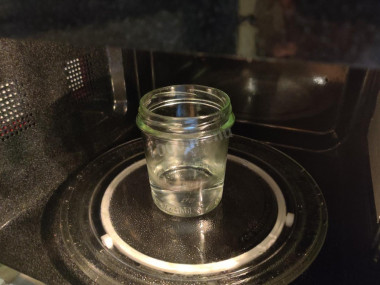
Wash the cans first with a baking soda brush. Pour about 50 ml into each.sterilize in the microwave for two minutes with water and at 800 watts of power. The larger the liter of cans, the longer they are sterilized. For example, a liter jar will take three minutes at the same power. Of course, all furnaces are different. The landmark is the boiling of water in a jar. Just wash the lids, pour boiling water over them and leave them in this form until they are needed.
Step 11:
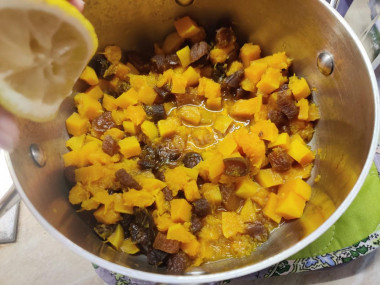
After the mixture has boiled, add lemon juice, cinnamon and nutmeg to the pan. Add nutmeg only if you have nothing against it. It is quite specific, and many do not like it. And you need it just a little bit, literally on the tip of a knife. For my taste, the combination of nutmeg with pumpkin is very successful. Mix everything.
Step 12:
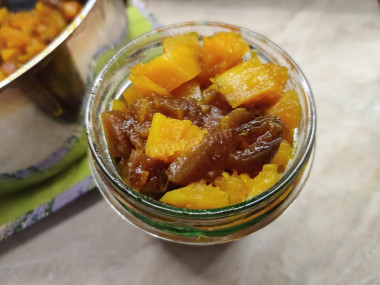
Arrange the filling for baking in jars and tighten the lids. Turn over and wrap the jars with a towel. Leave to cool completely. Then store in a cool place.
It seems to me that this filling (or jam?) - from a series of those that are cooked a little bit, stored in beautiful small jars, taken out on special occasions for dear guests, and savored for a long time, with pleasure.
The taste is very unusual for me. Sweet and sour, and slightly cinnamon. Dried apricots add extra sweetness and a slight bitterness. And muscat adds a touch of aristocracy.
This filling is suitable for any baking: pies, pies, cakes, pastries, buns, cupcakes, pancakes. It can be added directly to the dough, cream, if desired, or layer cakes with it.
Bon appetit!
Caloric content of the products possible in the composition of the dish
- Pumpkin - 29 kcal/100g
- Cinnamon - 247 kcal/100g
- Granulated sugar - 398 kcal/100g
- Sugar - 398 kcal/100g
- Dried apricots - 215 kcal/100g
- Uryuk - 290 kcal/100g
- Dried peaches - 254 kcal/100g
- Lemon juice - 16 kcal/100g
- Nutmeg - 556 kcal/100g


